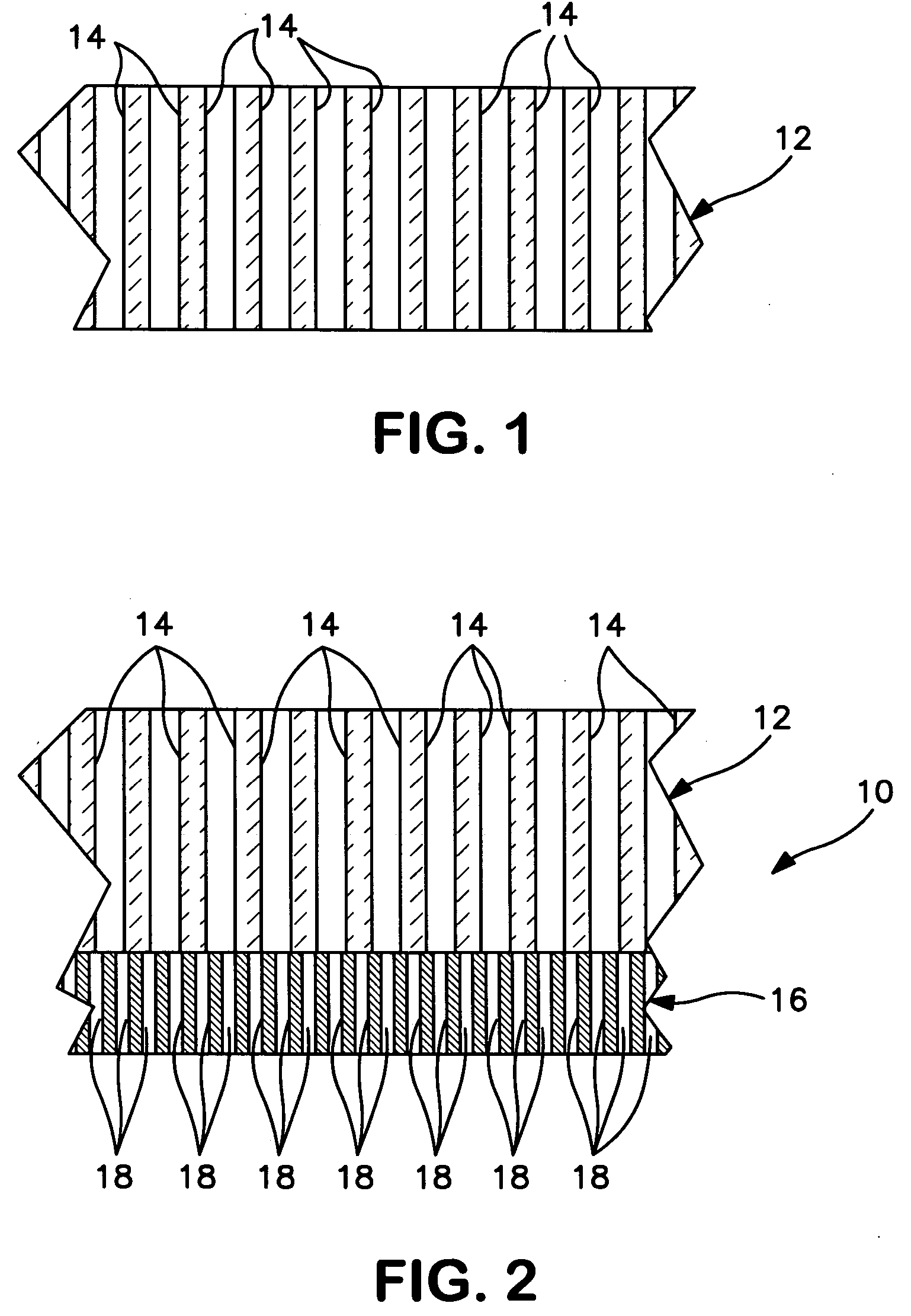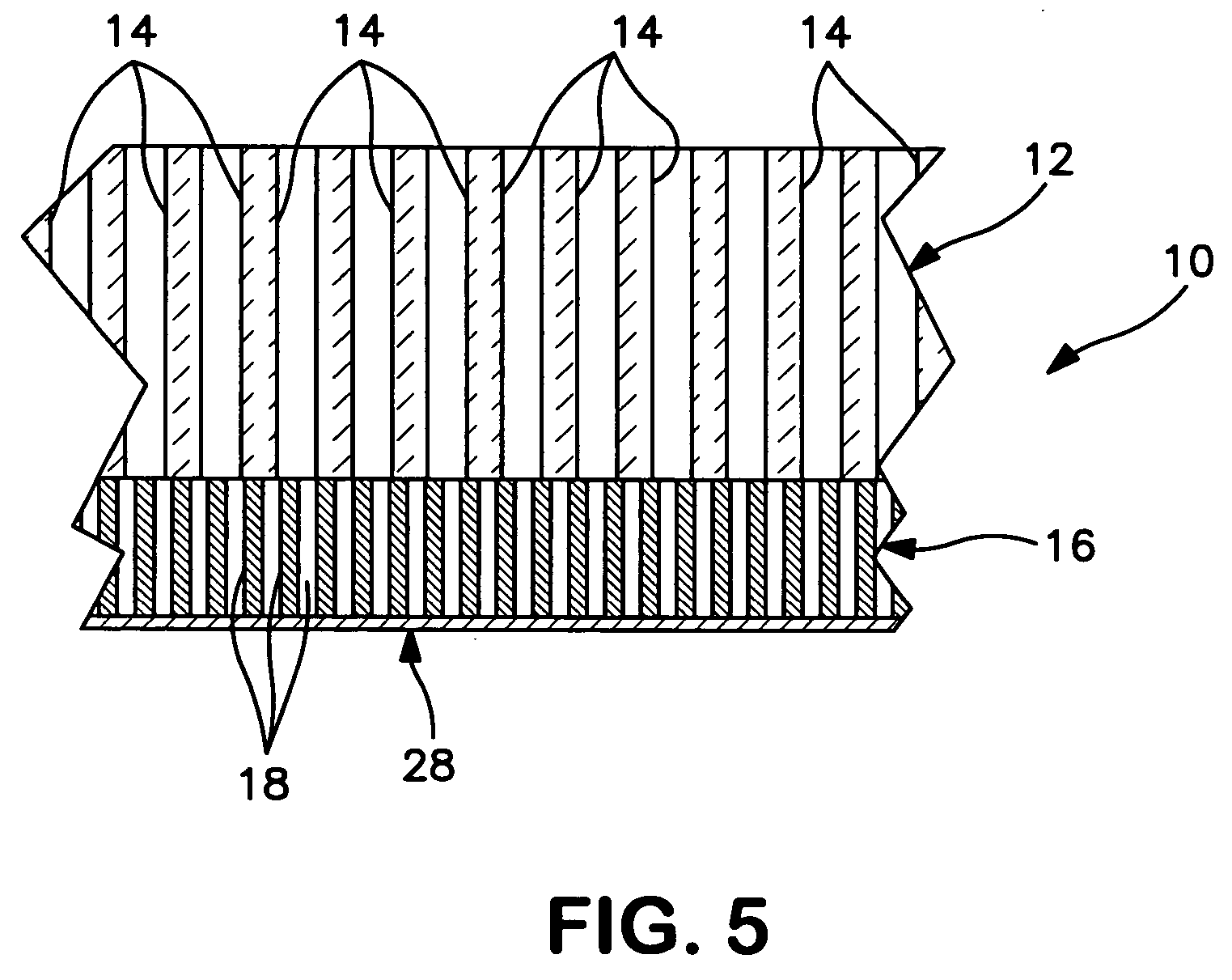Hydrogen transport membrane fabrication method
a hydrogen transport membrane and fabrication method technology, applied in the direction of membranes, liquid/solution decomposition chemical coatings, separation processes, etc., can solve the problems of inability to obtain very thin layers of hydrogen transport materials, the diffusion resistance of hydrogen through the support is invariably increased, and the hydrogen diffusion resistance is greater than. to achieve the effect of preventing defects from forming
- Summary
- Abstract
- Description
- Claims
- Application Information
AI Technical Summary
Benefits of technology
Problems solved by technology
Method used
Image
Examples
Embodiment Construction
[0024] With reference to FIGS. 1 and 2, a hydrogen transport membrane is formed by first forming a porous ceramic support 10 that will be used in supporting a hydrogen transport material made up of palladium or an alloy of palladium. Porous support 10 is formed by first producing a first porous layer 12 having a first set of pores 14 and then forming a second porous layer 16 having a second set of pores 18 on the first porous layer 12. As shown in the illustration, the second set of pores 18 has a smaller pore size than first set of pores 14. This allows a large open area to be provided adjacent to the hydrogen transport material by virtue of the second porous layer 16 and an increased pore size of first porous layer 12 to minimize diffusion resistance of the hydrogen to be separated through the porous support 10.
[0025] It is to be noted that although first set of pores 14 and second set of pores 18 are shown as being cylindrical bores, preferably, the structure is an interconnecte...
PUM
| Property | Measurement | Unit |
|---|---|---|
| thickness | aaaaa | aaaaa |
| pore size | aaaaa | aaaaa |
| pore size | aaaaa | aaaaa |
Abstract
Description
Claims
Application Information
 Login to View More
Login to View More - R&D
- Intellectual Property
- Life Sciences
- Materials
- Tech Scout
- Unparalleled Data Quality
- Higher Quality Content
- 60% Fewer Hallucinations
Browse by: Latest US Patents, China's latest patents, Technical Efficacy Thesaurus, Application Domain, Technology Topic, Popular Technical Reports.
© 2025 PatSnap. All rights reserved.Legal|Privacy policy|Modern Slavery Act Transparency Statement|Sitemap|About US| Contact US: help@patsnap.com



